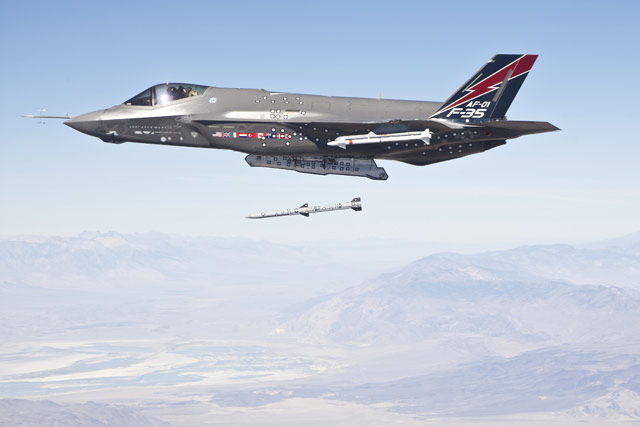Former US Navy chief of naval operations Adm Gary Roughead says the US Department of Defense (DoD) should consider eliminating the F-35A version of the Lockheed Martin Joint Strike Fighter (JSF) in favour of the carrier-based F-35C. In recent weeks, the idea has gathered momentum with current and former defence officials saying the Pentagon's office of Cost Assessment and Program Evaluation (CAPE) is studying the idea even though the DoD officially denies those claims.
Roughead says the question must be asked as to whether it is better to reduce the number of F-35 variants to a short take-off and vertical landing variant and one version that can take-off and land conventionally. "My simple logic says it probably is, but there are a lot of factors that go into it," he says.
Roughead says it makes sense to have the US Air Force adopt the C-model jet because it can operate from land bases as well as from the US Navy's 11 "big deck" aircraft carriers, whereas the A-model cannot. "The reason that I said to go with the C is because you will still want to be able to use the JSF from aircraft carriers," he says. It also has greater range than the USAF's A-model aircraft.
"There will clearly be some firmly-held beliefs in play," Roughhead says. "But I think that when you're in the budget times in which we're in, there are no dumb ideas."
 |
|---|
| USAF |
While a lot of analytical work would have to be carried out, Roughead says it is possible that reducing the number of variants could reduce the F-35's considerable lifecycle costs, currently estimated to top $1.1 trillion. Roughead says that under the current structure, training, depot maintenance and logistics are different for the three variants. Additionally, software upgrades for the three versions could be different, he says.
Roughead says he has not talked to anyone at the DoD about his suggestion, but a number of current and former defence officials say CAPE is examining the idea. "I'm sure CAPE is looking at this," says one senior government official, although he adds that he does not know "how serious a look".
Another senior official also says CAPE is looking at eliminating the A-model. "During the latest sequestration drill, CAPE took another run on cutting out one of the variants of the JSF," he says. "The argument is the air force should do it and buy the C version. I went through that drill before, but it lost legs."
Additionally, three former officials also say their information suggests CAPE is once again examining the cancellation of the F-35A model jet. CAPE had previously studied terminating the F-35A at the behest of then-undersecretary of defense for acquisitions, technology and logistics John Young, during his tenure which ended in 2009.
The Office of the Secretary of Defense (OSD) however insists CAPE is not looking at cancelling the F-35A. "In checking with CAPE and JPO this is not the case," the OSD says.
Additionally, an F-35 Joint Program Office (JPO) official tells Flightglobal CAPE is not looking at terminating the A-model aircraft. The official says he has personally talked to the individual at CAPE who would be tasked with such an analysis and the person in question assures him no such work is under way. Moreover, the JPO official says, the USAF would never accept the C-model because of its comparatively lower aerodynamic performance and heavier structural weight. In any case, there is little developmental money left to be saved by killing a variant at this point, not to mention the C-model is more expensive than the A-model.
Retired US Marine Corps Lt Gen Emerson Gardner, a former deputy director of CAPE, says that he has not heard of any study to eliminate the F-35A, but he offers a potential explanation: "This is the normal time of year for CAPE to do longer-term studies and analyses outside of the time pressures of the fall program review." He adds that if CAPE is doing this particular analysis it could be a drill to provide data for discussions in the Quadrennial Defense Review or to be prepared for the programme review of the service's programme objective memorandum 2015 later this year.
Lockheed Martin officials declined to comment.
Source: Flight International



















